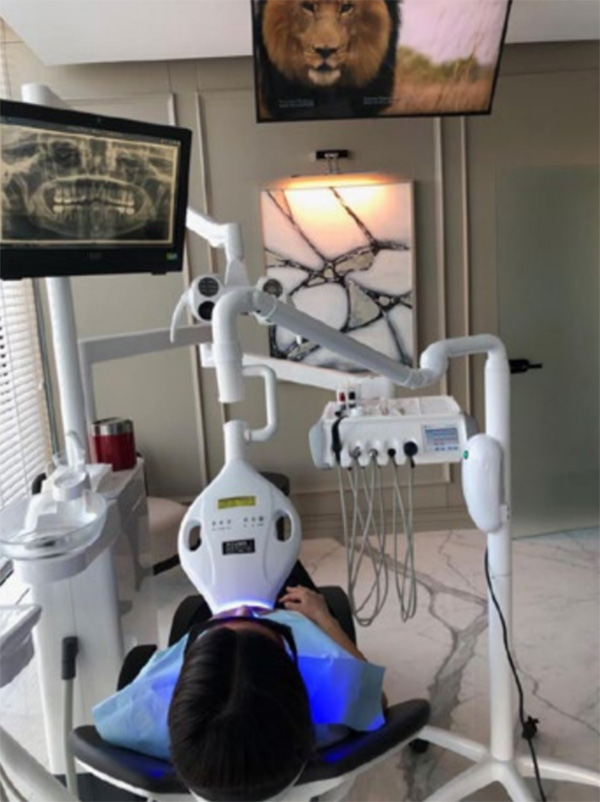

İnternet sitemizde çerezler kullanılmaktadır. Çerezleri nasıl kullandığımız hakkında daha fazla bilgi için Çerez Politikamız'ı ziyaret edebilirsiniz. Aşağıda yer alan “Tamam” butonu ile tüm çerezleri kabul edebilirsiniz.
Tamam
How is the whitening process being applied ?
Whitening techniques performed inside the clinic are called "power bleaching" or "office bleaching". Techniques applied outside the clinic- at home, under the control of dentists are called "nightguard bleaching" or "home bleaching". These techniques can be applied separately or in combination with each other.
The Office Bleaching is the teeth whitenig procedure, performed by the doctor in the clinic, being applied in sessions.
It is applied by activating the high concentration whitening agent with various of light sources such as laser, haloge or LED. Results are achieved in a short time in bleaching sessions, taking approximately 30-45 minutes.
In this method, the patient applies the reclaiming process with a specially prepared plate.
A sufficient amount of bleaching agent is applied into the plaque and the plaque is placed on the teeth. The application is carried out in line with the recommended time.
Is the Bleaching Process painful?
After bleaching, it is important to avoid factors that cause discoloration in teeth. In order to maintain the effect of bleaching processes, teeth should be brushed at least twice a day with using the dental floss. The use of tobacco products such as cigarettes, hookahs should be reduced within the recommended period of the whitening agent applied, or quit if its possible. Acidic drinks should be consumed as little as possible, tea, coffee, sauced foods - consumption of beverages and foods that cause tooth discoloration should be limited.
How Long is Teeth Whitening Effect seen?
The effect of teeth whitening lasts for an average of 1 year. If you do not smoke heavily, do not consume foods that can color the teeth, and if you care about oral care and hygiene, this period will be longer. In addition, if the whitening procedure performed in the clinic is supported by the whitening procedure performed at home every 3-6 months, the period can be extended and the result of the whitening may become permanent.
What is the alternative of whitening ?
There are many whitening products on the market offered for the individual client with possiblity of buying them from pharmacies or markets, such as a bleaching transparent tape (strip)- attached to the teeth, applied with a brush or special pen.
It is very important for the individual to consult with the dentist before using them. Misuse of these products can cause abrasion of the non-recyclable tooth enamel, sensitivity of the teeth, and gingivit's irritation.
Products sold as toothpaste, which are marketed especially for smokers, remove the stain on the tooth surface by abrading, but while removing the stain, they create deep scratches on the enamel surface and cause the tooth to color faster in later periods.
The whitening process applied to the teeth with root canal treatment is being seen with very successful results.
Without damaging the root canal filling of the tooth, a gap is obtained on the restorative filling of the tooth, extending to the canal filling. Whitening agent is applied to the opened space. The tooth is then tightly covered with temporary filling material. The sessions are repeated until the desired color is achieved.